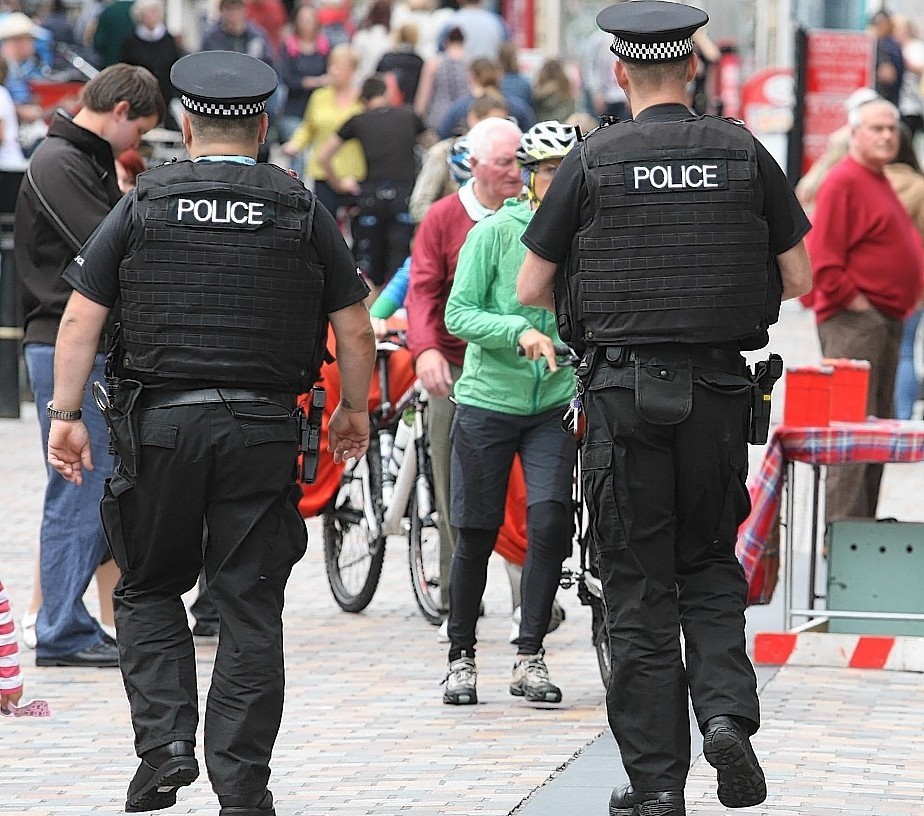Press and Journal readers have said No to having armed police on routine patrol in the north.
More than 1,000 people voted in the newspaper’s exclusive online poll on the controversial issue.
More than 625 of them said specialist officers in the Highlands should not be allowed to carry firearms at all times.
A total of 381 people said they believed they should.
Opponents of the guns policy have welcomed the results, which back their stance on the issue.
There has been growing unease over the use of armed officers on routine patrols.
Officers sporting Glock pistols on their hips have been seen attending run-of-the-mill incidents, such as a recent disturbance at a fast food outlet in Inverness.
Councillor David Alston, deputy leader of Highland Council, said there was growing support for calls for the policy to be reviewed.
He added: “Fundamentally, this is a matter of civil liberties and the power of the police.
“Even those who are in support of this policy would, I think, agree that it is something that should have been publicly debated and discussed in the Scottish Parliament before it was adopted.”
He said that those opposing the armed patrols were now seeking meetings with Vic Emery, the chairman of the Scottish Police Authority, and Justice Secretary Kenny MacAskill.
Mr Alston is also writing to the local government body Cosla, asking for its support in clarifying the issue.
He added: “There has been concern expressed across Scotland about this.”
Inverness, Nairn, Badenoch and Strathspey MP Danny Alexander said: “Clearly, many people in the Highlands have deep reservations about arming officers for regular duties.
“As well as this significant change to the style of policing in the Highlands, we are seeing mounted units in Inverness for the first time, and the closure of our expert control room and front desks.
“For those of us who opposed the centralisation of police services, these radical changes are deeply worrying.”
But Inverness councillor Donnie Kerr said yesterday: “None of my constituents have brought it up as a concern. They were more worried about the police being sent to the Commonwealth Games.
“There are more important things to be worried about.”
The revelation that armed police were routinely patrolling parts of the Highlands has prompted significant debate in the region.
Stories about the issue have been read by a global audience.
Many members of the public have reported their alarm at seeing officers with weapons in shops in the north.
There is a fear that the policy could lead to all Scottish officers being armed in the future.
Mr MacAskill recently gave assurances to the Scottish Parliament that would not happen.
He made a statement at Holyrood last week asking the public to “understand and accept the need for a small number” of officers to carry firearms.
Assistant Chief Constable Wayne Mawson said: “Police Scotland’s armed officers are a small number – 275 – of highly trained individuals, representing less than 2% of our total strength, who have volunteered to take on this extra responsibility so that our other 17,000 officers can remain unarmed.
“While it is very rare, criminals who are intent on causing serious harm to others, with weapons such as guns or knives, can and do strike in both urban and rural communities. Often, this happens with little or no notice.
“Police Scotland, along with virtually every other force in the UK, requires an armed capability to be able to quickly and professionally respond to such armed threats, in order to keep our communities safe.”
